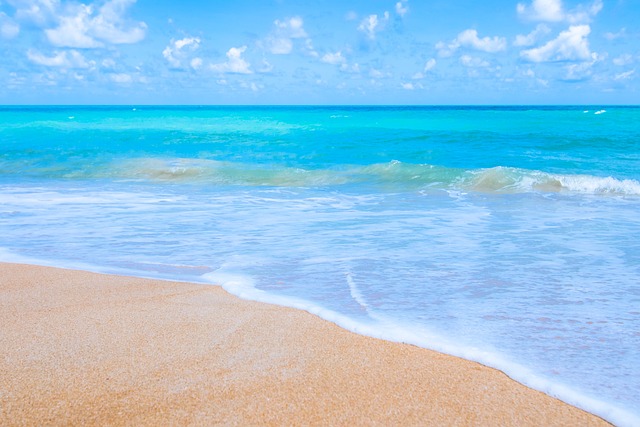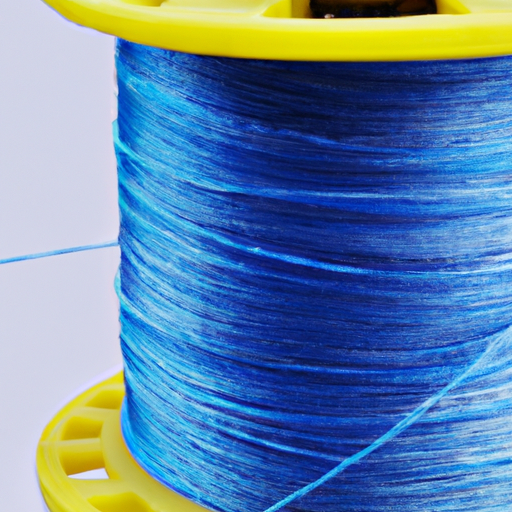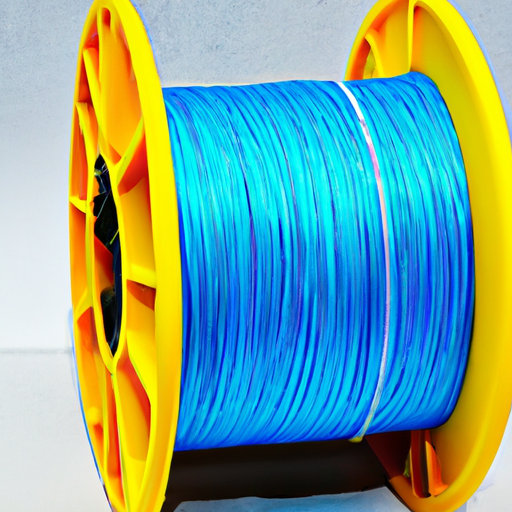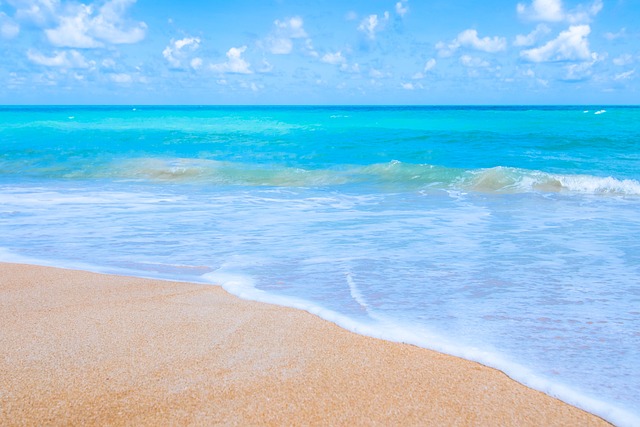and other fishing lines? If you enjoy fishing, you probably know that choosing the right fishing line is crucial for a successful fishing trip. But with so many types of fishing lines available, it can be overwhelming to know which one is best for you. In this article, we will dive into the world of fishing lines and focus on understanding the differences between monofilament and other popular options.
Monofilament fishing line is a great choice for many anglers due to its versatility and affordability. It is made from a single strand of nylon, which gives it its name. One of the main advantages of monofilament is its excellent strength and flexibility. It can withstand heavy loads without breaking easily, making it ideal for catching larger and stronger fish. Additionally, monofilament has a high abrasion resistance, meaning it can handle rough underwater structures or sharp objects without getting damaged. In our upcoming article, we will explore other types of fishing lines, such as braided and fluorocarbon, and discuss their unique characteristics and applications. So, if you want to enhance your fishing knowledge and make an informed decision next time you hit the water, keep reading! and other fishing lines? If you’re an avid angler or just starting out, understanding the various types of fishing lines available can greatly impact your fishing experience. In this article, we will provide an overview of fishing lines, with a specific focus on monofilament lines, and compare them with braided and fluorocarbon lines.
Overview of Fishing Lines
Fishing lines are the most fundamental equipment used in angling. They are essential for connecting the fishing rod to the bait or lure and ultimately to the fish. Fishing lines come in various materials, each with its own unique characteristics and advantages. Choosing the right fishing line is crucial for a successful fishing trip.
Definition of Fishing Lines
Fishing lines are cords or threads made from different materials, designed specifically for fishing. They provide the necessary strength and flexibility to handle the tension and forces exerted during fishing. Fishing lines are typically made from nylon, Dacron, fluorocarbon, or a combination of these materials.

This image is property of pixabay.com.
Importance of Choosing the Right Fishing Line
Choosing the right fishing line is essential for several reasons. Firstly, it affects your casting distance and accuracy. Different fishing lines have varying levels of stiffness and thickness, which impact how far and accurately you can cast your bait or lure. Secondly, the choice of fishing line also affects the visibility to the fish. Some lines are more visible in the water, potentially deterring fish from biting. Lastly, the strength and durability of the fishing line are crucial factors when reeling in and landing fish of different sizes and species.
Various Types of Fishing Lines
There are three main types of fishing lines: monofilament, braided, and fluorocarbon. Each of these lines has its own composition, construction, advantages, and disadvantages.

This image is property of pixabay.com.
Introduction to Monofilament Fishing Lines
Definition of Monofilament Fishing Lines
Monofilament fishing lines are made from a single strand of synthetic material, usually nylon or polyester. They are the most commonly used fishing lines due to their affordability, versatility, and widespread availability.
Composition and Construction
Monofilament lines are made by extruding the molten material through tiny holes to form a single strand. This manufacturing process produces a consistent diameter throughout the line, which provides uniform strength and flexibility.
Advantages of Monofilament Fishing Lines
Monofilament lines have several advantages. Firstly, they are highly versatile and can be used in various fishing conditions and techniques. Additionally, they have good knot strength, making them easy to tie and secure to the fishing rod or hooks. Monofilament lines also have some degree of stretch, which can act as a shock absorber when reeling in large or powerful fish.
Disadvantages of Monofilament Fishing Lines
Despite their advantages, monofilament lines have some drawbacks. They tend to have higher visibility in the water compared to other types of fishing lines, which can make fish more cautious. Monofilament lines are also prone to “memory,” meaning they can retain the shape of the spool and tangle easily. Furthermore, monofilament lines have a tendency to degrade over time, especially when exposed to sunlight or harsh environmental conditions.
Comparison with Braided Fishing Lines
Definition of Braided Fishing Lines
Braided fishing lines, as the name suggests, are made by weaving together multiple strands of synthetic fibers, such as Spectra or Dyneema. This construction gives braided lines exceptional strength and sensitivity.
Composition and Construction
Braided lines are constructed by intertwining several strands of synthetic fibers to form a tight braided structure. This construction creates a line with high strength and minimal stretch.
Advantages of Braided Fishing Lines
Braided lines have numerous advantages. They are incredibly strong and have a much higher tensile strength compared to monofilament lines. This strength allows anglers to use thinner and lighter lines while still maintaining the needed durability. Braided lines also have very little stretch, which enhances sensitivity and provides a more direct connection between the angler and the fish.
Disadvantages of Braided Fishing Lines
Despite their strengths, braided lines have some disadvantages. The lack of stretch can make them prone to breaking under sudden or excessive tension. Additionally, the low stretch of braided lines may reduce the shock absorption during aggressive strikes or when bigger fish are fought. Braided lines are also more visible in the water, potentially deterring fish that are easily spooked.
Differences in Strength and Sensitivity
One of the most significant differences between monofilament and braided lines is their strength and sensitivity. Braided lines are much stronger than monofilament lines of the same diameter, allowing anglers to use thinner lines without sacrificing strength. Additionally, the minimal stretch of braided lines enhances sensitivity, allowing anglers to detect even the slightest nibbles or tugs on the line.
Differences in Visibility and Stretch
Another notable difference between the two types of lines is their visibility and stretch. Monofilament lines are more visible in the water, potentially making fish wary and decreasing the chances of a bite. On the other hand, braided lines are less visible due to their thinner diameter and are often preferred when fishing in clear waters or targeting finicky fish. Additionally, monofilament lines exhibit some degree of stretch, acting as a shock absorber during intense fights or when fish make sudden moves.

This image is property of pixabay.com.
Comparison with Fluorocarbon Fishing Lines
Definition of Fluorocarbon Fishing Lines
Fluorocarbon fishing lines are made from a specific type of polymer that has similar light refraction properties to water, making them virtually invisible underwater. These lines have gained popularity among anglers for their stealthy characteristics.
Composition and Construction
Fluorocarbon lines are made from a combination of different materials, including polyvinylidene fluoride. This combination gives fluorocarbon lines their unique properties, such as invisibility in water and resistance to degradation.
Advantages of Fluorocarbon Fishing Lines
Fluorocarbon lines have several advantages. They are nearly invisible underwater, making them highly effective when targeting fish that are easily spooked or in clear water conditions. Fluorocarbon lines also have excellent abrasion resistance, making them highly durable and suitable for fishing in rocky or rough areas. Additionally, fluorocarbon lines have a higher density than water, allowing them to sink more quickly, which is advantageous when fishing in deeper waters.
Disadvantages of Fluorocarbon Fishing Lines
Despite their advantages, fluorocarbon lines also have some disadvantages. They tend to be more expensive than monofilament and braided lines, which can deter budget-conscious anglers. Fluorocarbon lines are also less forgiving when it comes to knot strength, requiring more attention and expertise when tying knots. Furthermore, fluorocarbon lines are stiffer than other lines, making them less manageable and more challenging to cast.
Differences in Visibility and Invisibility
The significant difference between monofilament and fluorocarbon lines lies in their visibility underwater. Fluorocarbon lines have excellent light refraction properties, making them nearly invisible when submerged. This invisibility allows anglers to trick finicky fish and increase their chances of a successful bite. Monofilament lines, in contrast, are more visible in the water, potentially reducing the chances of attracting fish.
Differences in Strength and Durability
While fluorocarbon lines have increased strength and durability compared to monofilament lines, they are not as strong as braided lines. This difference in strength and durability makes fluorocarbon lines ideal for fishing in areas with sharp rocks or dense cover, where abrasion resistance is crucial.
Special Characteristics of Monofilament Fishing Lines
In addition to their composition and construction, monofilament lines have certain unique characteristics that set them apart from other fishing lines.
Shock Absorption and Knot Strength
Monofilament lines have some natural stretch, which acts as a shock absorber during intense fights or when fish make sudden, powerful moves. This shock absorption helps prevent the line from breaking and increases the chances of successfully landing a fish. Additionally, monofilament lines have good knot strength, making them easy to tie and secure without compromising the overall strength of the line.
Ease of Handling and Casting
Monofilament lines have excellent handling characteristics, making them easy to manage and cast. Their flexibility allows for smooth casting and reduces the chances of tangling or bird nesting. The forgiving nature of monofilament lines makes them suitable for anglers of all skill levels, including beginners.
Buoyancy Characteristics
Monofilament lines have neutral buoyancy, meaning they neither float nor sink. This characteristic makes them ideal for various fishing techniques, including topwater fishing, where the bait or lure needs to float on the surface. The neutral buoyancy of monofilament lines allows for precise control and manipulation of the bait or lure.

Applications of Monofilament Fishing Lines
Monofilament lines have a wide range of applications and are suitable for both freshwater and saltwater fishing.
Freshwater Fishing
Monofilament lines are commonly used in freshwater fishing. They are versatile and can be used for various fishing techniques, including spinning, baitcasting, and trolling. Their forgiving nature and ease of use make them ideal for beginner anglers or those starting out in freshwater fishing.
Saltwater Fishing
Monofilament lines are also suitable for saltwater fishing. They have good resistance to corrosion and degradation, making them durable in saltwater environments. Monofilament lines are commonly used when fishing inshore or nearshore, targeting species such as redfish, snook, or flounder.
Different Fishing Techniques
Monofilament lines can be used in various fishing techniques, including bottom fishing, float fishing, and live bait fishing. Their versatility allows anglers to adjust the line’s strength and thickness to match the targeted fish species and fishing conditions.
Factors to Consider when Choosing Fishing Lines
When choosing a fishing line, several factors should be taken into consideration.
Targeted Fish Species
Different fish species require different fishing lines. Larger or stronger fish may require thicker and stronger lines to withstand their power and weight. Smaller or more delicate fish may be more likely to bite on thinner lines.
Fishing Environment
The fishing environment, whether it be freshwater or saltwater, plays a crucial role in choosing the right fishing line. Freshwater fishing lines may have different requirements compared to saltwater lines due to the differing water conditions and fish behavior.
Personal Skill Level
The angler’s skill level also influences the right fishing line choice. Beginner anglers may find it easier to handle and cast monofilament lines due to their forgiving nature. More experienced anglers may opt for braided or fluorocarbon lines to maximize their fishing capabilities.
Budget and Cost
Lastly, the budget and cost are essential factors to consider when selecting a fishing line. Monofilament lines are generally more affordable compared to braided and fluorocarbon lines. However, it is important to strike a balance between cost and quality.

Maintenance and Care of Monofilament Fishing Lines
To prolong the life and performance of your monofilament fishing lines, proper maintenance and care are necessary.
Cleaning and Drying
After each fishing trip, it is essential to clean your fishing lines to remove any dirt, debris, or saltwater residue. This can be done by wiping the line with a clean cloth or soaked in a mild soapy solution. After cleaning, ensure that the line is thoroughly dried before storing it to prevent mold or mildew growth.
Storage and Organization
Proper storage and organization of fishing lines help maintain their performance and integrity. Storing them away from direct sunlight and extreme temperatures is crucial to prevent premature degradation. Additionally, using storage solutions such as line spools or bags can help keep the lines tangle-free and protected.
Replacing Worn-out Lines
Lastly, it is important to regularly inspect your monofilament lines for signs of wear and tear. Frayed or damaged lines should be replaced promptly to avoid potential line failure during fishing trips. Regularly replacing worn-out lines ensures you are always using strong and reliable fishing lines.
Conclusion
In conclusion, understanding the differences between monofilament and other fishing lines is essential for an angler’s success. Monofilament lines offer versatility, ease of use, and affordability, making them a popular choice among anglers of all skill levels. However, braided and fluorocarbon lines have their own unique advantages, such as strength, sensitivity, and invisibility, which may be more suitable for specific fishing situations and techniques. By considering various factors such as the targeted fish species, fishing environment, and personal skill level, you can choose the right fishing line that enhances your fishing experience. With continual advancements in fishing line technology, anglers can expect even better performance and durability from all types of fishing lines in the future.
